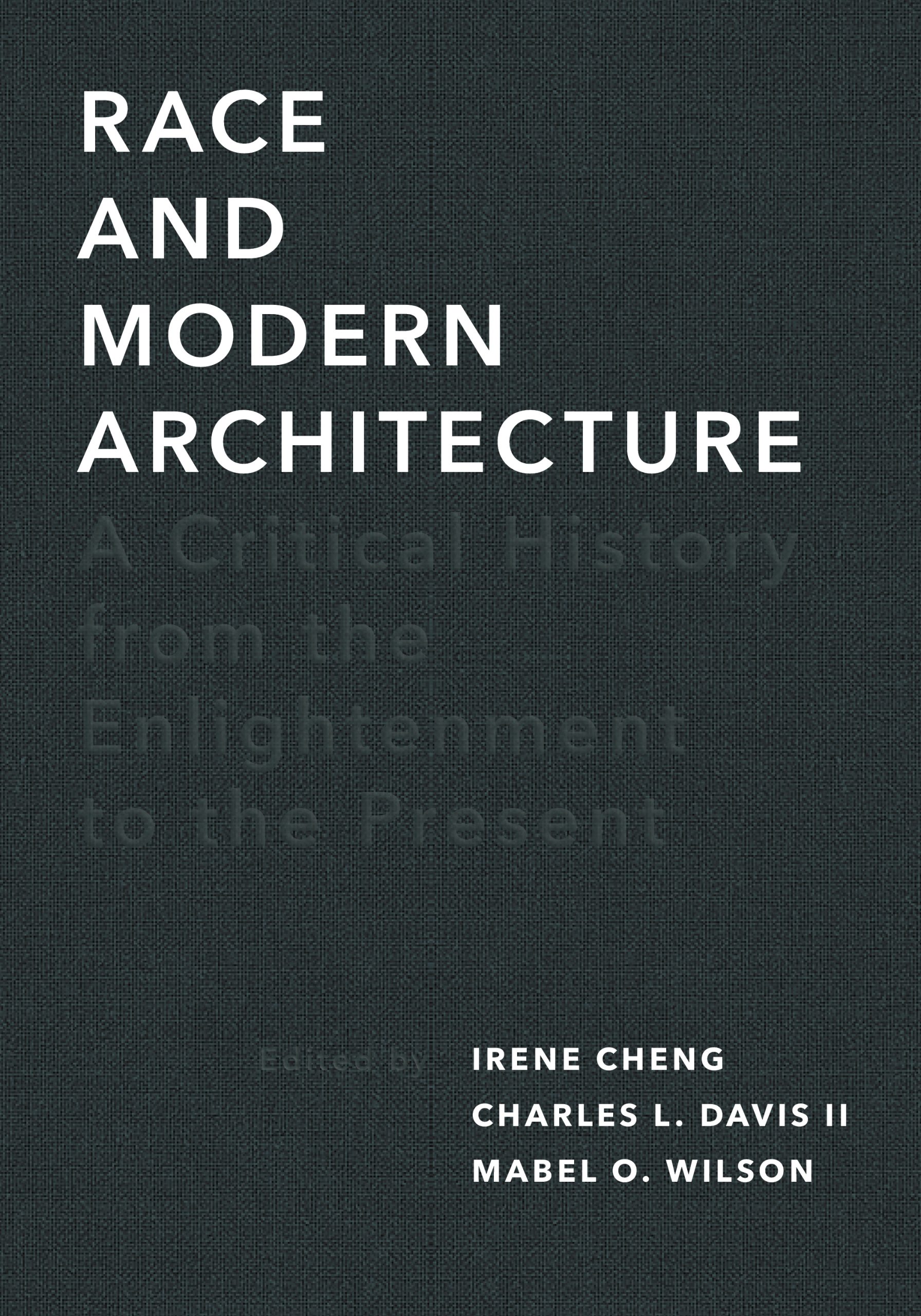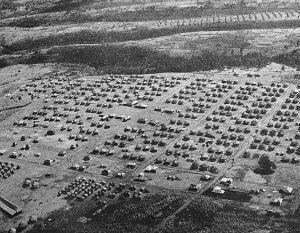Irene Cheng, Charles L. Davis II, and Mabel O. Wilson, eds.
University of Pittsburgh Press, 2020

As we find ourselves in the throes of a resurgence of overt white nationalism, an epidemic of police violence against Black communities, and the disproportionate effects of the COVID-19 pandemic on communities of color, Race and Modern Architecture: A Critical History from the Enlightenment to the Present underscores the importance of inscribing non-white actors into the architectural histories from which they have been excluded. The book demonstrates that in spite of its once lofty social agendas, modern architecture has defined itself through exclusion—something its contributors are prying open to allow for an ambition of newfound inclusivity. Editors Irene Cheng, Charles L. Davis II, and Mabel O. Wilson, along with fifteen additional authors, take on the monumental task of addressing this complicated history by arguing that modern architecture and its discourse became powerful tools of racial subjugation.
Race and Modern Architecture is organized around six themed parts, each of which dovetails prevailing topics of architectural scholarship including The Enlightenment, organicism, nationalism, representation, colonialism, and urbanism. The volume joins scholarship that has begun to address the systemic racism inherent in architectural history and practice, including Craig L. Wilkins’ Diversity among Architects: From Margin to Center (2016) and Sharon E. Sutton’s When Ivory Towers Were Black: A Story about Race in America’s Cities and Universities (2017). One notable divergence here is the editors’ focus on broadening the scope of inquiry beyond a single theme, time period, geographic region, racial group, or ethnic identity. In so doing, they bring challenging conversations to the forefront of architectural history which seem poised to engender dialogues that will reverberate beyond the printed pages, even if they are, at times, limited.

The authors included in each section each tackle microhistories that impel macronarratives. In the Western context, Mabel O. Wilson and Peter Minosh each explore the inherently repressive qualities of a “culture of taste” with respect to early capitol buildings, highlighting the fact that these “temples of liberty” were built by enslaved individuals for “the people,” a category from which they were excluded (43). Irene Cheng connects the visual basis of racial bias to the built environment through the stylistic categorization of buildings. The implication of style as a form of “structural racialism” underscores that such a categorization is not something enacted by individuals, but encoded into the very systems of architectural knowledge (134). As a result this, too, participates in a perpetuating cycle of othering, an act which appears at many scales. Although the ambitions of Reinhold Martin’s chapter, “Drawing the Color Line,” are far more encompassing than small architectural details, among the more fascinating arguments is the manner in which the dumbwaiter at Thomas Jefferson’s Monticello effectively “excluded black voices and black ears” from the dining room by mediating dinner service through something as simple as a now outmoded technology (66).
Race and Modern Architecture also encompasses topics outside of the American context. Addison Godel explores the way in which China was viewed as a kind of fantastical other by Europeans—one whose value rested in a narrative of difference and decline that was disconnected from the realities and nuances of Chinese culture and society. Adedoyin Teriba argues that the advent of the Mosque of the Òyìnbó-Dúdú (white-Black) further destabilizes notions of power hierarchies and racial logics as they relate to the diverse history of foreign influence from Brazil and Victorian England in Nigeria, in part by encoding foreign stylistic references into architecture.
The editors and authors do not shy away from exposing the common tendency to construct whiteness vis-à-vis Blackness, a construction which relies on the oppressor again subjugating the identity of the oppressed in order to more precisely define itself—by identifying what it is not. Diane Harris also brings these issues to light in her chapter, “Modeling Race and Class.” The essay counterposes the imageability of a sanitized and constructed idea of a “desired whiteness” in 1950s suburbia with the disturbing image of Black fourteen-year-old boy Emmett Till, brutally murdered, lying in his coffin at the dawn of the Civil Rights movement. The destabilizing effect of the power of photography to simultaneously expose and construct truth and falsehood reverberates deeply into both the American psyche and the built environment. One wishes this felt more like an historical moment than an ongoing present.


No single volume can be truly comprehensive, and this is no exception, but the project that Race and Modern Architecture attempts to navigate includes a wide territory of landscapes that are both familiar and less so, attempting to further broaden what our discipline considers to be foundational. These include issues of eugenics and the EUR in Rome, the villagization of Kenya, early modernism in Mexico, the construction of indigenization in pastoral Germany, the “junk art” of Noah Purifoy, representations of Black female bodies in accepted Western aesthetic traditions, the decolonization in tropical Malaysia, and the weaponization of blight in urban Detroit. Notably absent is any discussion of the South Pacific, including Hawai’i, a US state which deals very directly with entrenched issues of racism. What is clear is that both acute and structural racism pervade the social, cultural, and tectonic environments in which we all exist.

Unlike the neatly linear histories often championed by a Western viewpoint, the result of expanding and revising historians’ relationship to modernist discourse is necessarily messy, circuitous, and unpredictable—all things modernism has historically eschewed. Perhaps as a result of this, for too long there has been a tendency to avoid architectural praxes that fall just outside what a Western viewpoint might consider to be “modern,” and more often than not, these examples proliferate in the realm of the global majority. As a response to this condition, the editors and authors of Race and Modern Architecture have presented readers with a project that continues to intentionally chip away at the complicated history of modernist discourse and its seemingly overt avoidance of race, writ large. This will assuredly be a welcome and necessary addition to existing lecture and seminar courses that have too frequently eschewed these topics.

The decision to forgo a conclusion or coda to this book might at first seem like an unusual choice given the expansive range of scholarship presented within, but it is really the only appropriate one. How could there be a conclusion when the project of reinscribing race into the nooks and crannies of modern architectural discourse has barely even begun? As admirable as the suggestions to work toward a more inclusive “canon” might be, it strikes me that it is hard to make an idea more inclusive when its core mission is in fact to exclude. So what, then, do we make of this endeavor? It might be that we have to define new terms of engagement before we can break out of a long-standing and oppressive mold that history has bequeathed us—and which we have perpetuated. In reality, perhaps the issue lies in that as architects, historians, and theorists our collective need for a taxonomic classification of periods and styles may well indicate we will be eternally stuck in the vortex of othering. This, and not that. Race and Modern Architecture, however, is a useful vector that begins to point us toward an escape route.

Joss Kiely is an assistant professor at the School of Architecture and Interior Design at the University of Cincinnati where he teaches courses in architectural history and design studio at the undergraduate and graduate level. He holds two masters and a PhD in architecture from the Taubman College at the University of Michigan. His research agenda includes the master plan at midcentury as produced by architecture firms, as well as the rise of an “airport modern” style that ushered in a new wave of widespread commercial air travel and fueled the rise of the global postwar architectural practice.
How to Cite This: Kiely, Joss. Review of Race and Modern Architecture: A Critical History from the Enlightenment to the Present, by Irene Cheng, Charles L. Davis II, and Mabel O. Wilson, eds., JAE Online, January 29, 2021.






